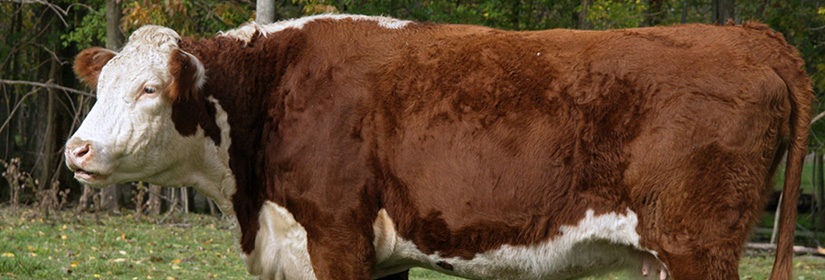No products in the basket.

What is Bovine Viral Diarrhoea (BVD) in Cattle?
Bovine Viral Diarrhoea (BVD) in Cattle
BVD is a viral disease of cattle, caused by a pestivirus, called Bovine Viral Diarrhoea Virus (BVDV). BVDV can infect cattle at any stage of their lives, resulting in impaired immunity thereby weakening the immune system and leaving the animal susceptible to other infections at the same time. This can be particularly pronounced in the case of cattle which become concomitantly infected with other respiratory viruses, such as IBR. Combined infection with IBR and BVD can cause a severe fulminating pneumonia and potentially death.
Animals which become infected with Bovine Viral Diarrhoea become viraemic for a period of time, usually 3-4 weeks. This means that during this time the virus is circulating in the animal’s blood and it is potentially infectious to other animals. This short period of viremia is termed “transient infection” or the animal may be called a TI, as an abbreviation. After the period of transient infection, the animal usually makes a complete recovery and is no longer infectious to other animals. This results in the animal developing a strong immunity to the disease. This immunity means that the animal produces high levels of antibodies, or seroconverts, to the disease. These antibodies help to protect the animal from further infection.
The most important aspect of BVDV virus occurs however when a pregnant cow is infected. This has severe and profound effects on the unborn foetus. Infection in the early stages of pregnancy (less than 30 days pregnant) results in loss of the pregnancy through early Embryonic Death (EED) after this time, approximately 30-120 days of pregnancy, an infection can become established in the foetus, resulting in viremia of the foetus. Due to the fact that the foetal immune system is not properly developed the viremia is not eliminated from the foetal circulation, as you would expect in a mature animal. This means that the foetus becomes Persistently Infected, or PI. PI calves are carried to term and are born persistently infected. Foetuses which are infected in later pregnancy can be born with deformities, such as angular limb deformities, retarded growth, blindness and brain damage.
Calves which are born Persistently Infected remain viraemic for the rest of their lives, and act as a source of infection to other cattle, shedding large quantities of virus in all secretions and excretions. Therefore, PI animals are an extremely dangerous source of infection to naïve animals. PI animals usually develop a terminal form of BVD called Mucosal Disease. Mucosal Disease is characterized by wasting, profuse diarrhoea, lameness and the development of interdigital lesions on the feet and the presence of ulcers in the mouth. Since 2013 there has been a compulsory BVD eradication Programme in Ireland run by Animal Health Ireland. This has been very successful in reducing the number of BVD PI animals in the national herd in the time since commencement. This has been achieved by the mandatory testing of every new-born calf in Ireland since the scheme commenced. Fortunately, therefore animals with Mucosal Disease are a rare sight nowadays on Irish Farms.
Testing For BVD
Since 2013 every newborn calf in Ireland has been tested for BVDV by taking a tissue sample from the animal’s ear at the time of birth. This tissue sample is then sent to a designated BVD testing laboratory to test for the presence of the viral agent in the ear tissue using a PCR Test.
FarmLab Diagnostics are designated by Animal Health Ireland to carry out testing as part of the national BVDV eradication programme.
FarmLab Diagnostics use a highly sensitive method of testing using PCR based tests to check for the presence of BVDV. If the calf fails to test negative, it may be resampled either by a follow-up tissue tag or a PCR Blood test taken by a veterinary practitioner.
These tests demonstrate the presence of viraemia, or BVDV circulating in the animal’s blood. Animals which may have been transiently infected in the past, but are no longer viraemic, may be tested using a BVD antibody test. This test just demonstrates that the animal has been infected in the past, but has now recovered. PI animals usually do not have detectable levels of BVD antibodies in their blood, therefore this test is not useful to diagnose persistently infected animals. Animals which have been vaccinated, particularly with a live virus, will mount an immune response and could have antibodies against BVD in their blood, despite the fact that they have never been infected. BVD antibody tests may be carried out on young animals as part of a juvenile screen, but given the requirement to have every new-born calf tissue-tag tested in Ireland this has been done less of late.
